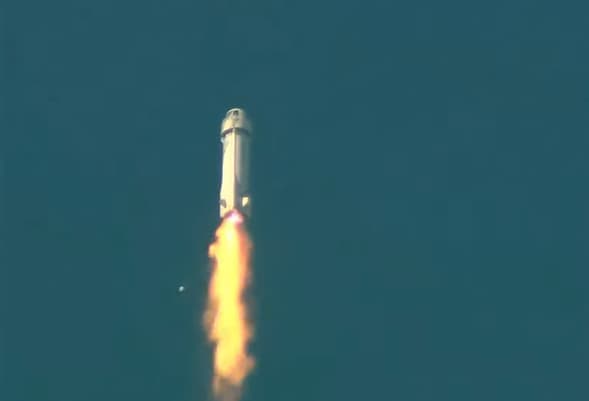
- Jeff Bezos’ space company Blue Origin released the findings of an investigation into the failure of a cargo mission last year.
- The failure is said to be due to a problem with the engine end of the rocket.
- “With the re-flight of NS-23 payloads, Blue Origin expects to return to flight soon,” the company said.
A moment of anomaly during the New Shepard cargo mission NS-23, in which the booster’s engine fails.
Blue appearance
Jeff Bezos’ space company Blue Origin has released findings from an investigation into the failure of a cargo launch last year, which it says was caused by a problem with the rocket’s engine end.
The company’s New Shepherd rocket, the NS-23 mission carrying science and research payloads, failed in September 2022. No one was on board, and Blue Origin says its capsule’s emergency escape system worked properly, but the rocket’s reusable booster was destroyed.
Bezos’ company has not said much about its investigation, which has been conducted over the past six months with oversight from the Federal Aviation Administration.
In A blog post On Friday, Blue Origin identified “thermo-structural failure of the engine nozzle” as the direct cause of the problem and is now modifying the engine, including design changes to account for higher-than-expected temperatures during flight.
“With the re-flight of NS-23 payloads, Blue Origin expects to return to flight soon,” the company said.
The New Shepard rocket carries people and payloads more than 100 kilometers — or more than 340,000 feet — from Blue Origin’s private facility in West Texas for two minutes of weightlessness. The capsule is flown autonomously without a human pilot and floats down with the aid of parachutes to land in the Texas desert. The new Shepard rocket booster is reusable, returning to land on a concrete pad near the launch pad.
Blue Origin attributed the NS-23 engine failure to “operating temperatures that exceeded the expected and analyzed values of the input material.” The company recovered pieces of the BE-3PM engine nozzle, finding “clear evidence of thermal damage and hot streaks resulting from elevated operating temperatures.”
The company noted that its design changes are aimed at improving the engine’s performance at high temperatures and strengthening the engine’s tip.





